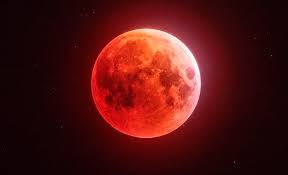
This Sunday’s total lunar eclipse, the Blood Moon, is simple to watch. No special gear needed. Just step outside and look up.
A Blood Moon happens when Earth slips between the Sun and the Moon. Our atmosphere bends sunlight and filters out blue tones, leaving that eerie red glow.
Timing & Who Can See It
- The total eclipse runs about 82 minutes Live Science.
- Totality begins around 17:30 UTC on September 7 and peaks at about 18:11 UTC WIREDSYFY.
- It will be visible from Asia, Africa, Australia, much of Europe, and parts of the Americas.
India’s timing? Around 11:00 pm to 12:22 am local time on Sunday night.
Ready to Watch
No eclipse glasses needed. Unlike solar eclipses, it’s perfectly safe to view the Blood Moon with the naked eye, binoculars, or a telescope.
Tip: Find a dark spot with a clear eastern horizon and give your eyes time to adjust. If you’re in the UK or western Europe, the Moon may just rise as totality begins The SunSky at Night Magazine.
Why It Matters
This eclipse is big news. Around 5.8 to 7 billion people over 75 percent of the world can see at least part of it.
It’s the last total lunar eclipse in 2025. The next doesn’t arrive until March 2026
Also Read: Apple iPhone 17 Pro Max Features & Offical Launch Date
What You Need to Remember About Sunday’s Blood Moon
The Blood Moon on Sunday is more than a sky show. It’s a rare total lunar eclipse that millions across Asia, Africa, Europe, and the Americas can see without any special equipment. The total eclipse will last for over an hour, giving plenty of time to step outside and enjoy.
If you’re in India, the eclipse runs late Sunday night, around 11:00 pm to 12:22 am. In Europe, the Moon will be low on the horizon as it darkens, creating dramatic views. Viewers in Africa and Australia will see the event high overhead. North and South America catch it closer to moonrise or moonset.
The red glow of a Blood Moon comes from Earth’s atmosphere bending sunlight. Dust, clouds, and pollution can deepen that red color. That means every eclipse looks a little different. Some appear bright copper, others turn a deep, almost rusty shade.
The good news is that it’s completely safe to watch. Unlike a solar eclipse, you don’t need special glasses. Binoculars or a telescope can make it more striking, but even the naked eye will capture the red Moon. For photographers, use a tripod and long exposure to bring out the rich tones.
This is the last total lunar eclipse of 2025. The next one won’t arrive until March 2026, so it’s worth planning to watch now. Make sure you check the local timing for your city, find a dark viewing spot, and hope for clear skies.
FOLLOW US ON SOCIAL MEDIA
Conclusion
The Blood Moon on Sunday is a rare chance to see the night sky at its most dramatic. A total lunar eclipse that lasts more than an hour, visible to billions across the world, and needing nothing more than a clear view of the sky. Whether you watch it with your eyes, through binoculars, or capture it on camera, this is one of those celestial events that brings people together under the same sky. Since the next total lunar eclipse will not come until March 2026, make the most of this one. Step outside, look up, and take in the Blood Moon while it lasts.
Disclaimer: This blog is for info and fun. Times can shift due to your location or local skies. Double-check with a trusted local source before heading out. News based on avalable reports.

